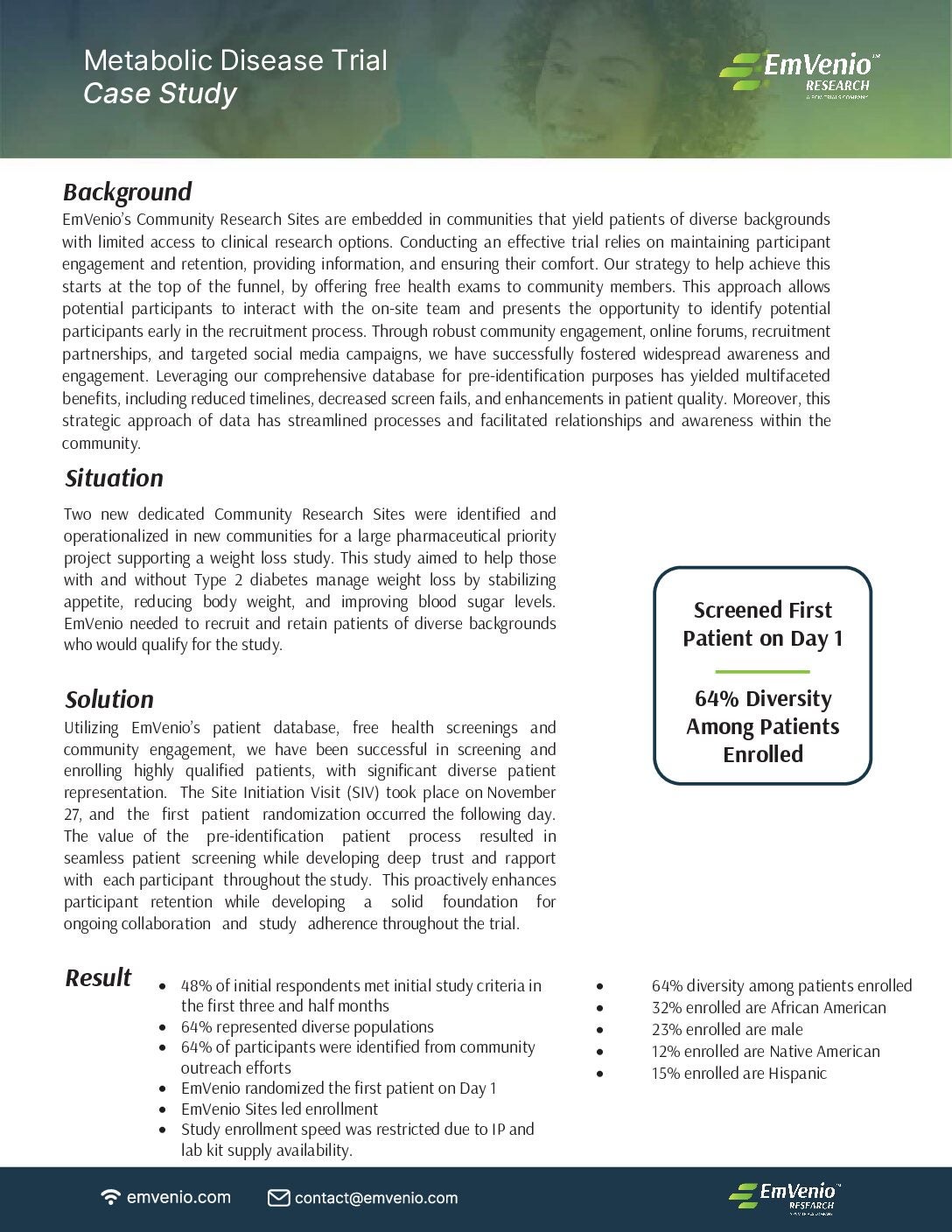
Clinical trials often face significant challenges in recruiting and retaining diverse participants, which can lead to skewed data and less effective treatments. Traditional trial models, typically located in urban academic medical institutions, large hospitals, and privately owned research centers, may inadvertently exclude minority populations due to logistical barriers and lack of accessibility.
According to GlobalData’s State of the Biopharmaceutical Industry 2024 Report (Mid-Year Update), 7.58% of ongoing clinical trials are using decentralized components such as wearable and electronic patient reported outcome (ePRO) devices. These innovative methods are reshaping the clinical trial landscape by enhancing the patient experience and improving access and retention rates. However, for clinical trials to become genuinely accessible for a broader range of patient demographics, more is needed than digitization and software. Deploying community-based research sites such as mobile units or those located within existing healthcare infrastructure like health centers, hospital networks and pharmacies can provide a more personal touch while ensuring clinical trials reach and retain more participants from minority backgrounds.
Community-based research methods are often deployed to give participants greater flexibility in how they engage with research. While interest in this model grows, various misconceptions have resulted. To better understand the benefits community-based research sites can bring to clinical trial sponsors and CROs, we spoke to EmVenio Research, a PCM Trials company, to debunk five prominent myths and misunderstandings.
1. Recruitment and retention are more difficult
Rather than making sourcing participants more difficult, trials with community-based research sites often see improved recruitment and retention rates. By participating nearer to home, the travel burden on patients is reduced, making trials more accessible to participants from diverse backgrounds. Being in the communities enables highly localized community engagement, establishing connections with residents and local organizations. By being present and actively participating in local events and activities, community-based research providers can build trust and credibility, which are essential for long-term collaboration and positive impact.
Through its site network, EmVenio actively aims to counteract the problem of low participant retention and limited diversity seen with traditional trials. By strategically placing sites within local communities, EmVenio ensures that trials are more accessible and inclusive. This approach not only enhances participant engagement but also fosters a more diverse and representative sample of trial participants.
More than 50% of EmVenio’s trial participants come from minority populations compared to the industry average of 20%. Additionally, the retention rate for EmVenio trial participants is 92% – significantly higher than the industry average of 70%. These statistics highlight how community-based research sites can remove obstacles to participation and ensure a trial recruits people from across the spectrum of human experience.
2. Community-based research lacks regulatory oversight
Another common myth is that community-based research sites, particularly for the use of decentralized trails, operate with less regulatory oversight than traditional trials, and that trials not undertaken at a physical site may not adhere to protocol. The reality is that these trials are legally bound to comply with the same regulatory requirements established by bodies such as the FDA.
Such regulatory proceedings are taken seriously by EmVenio, whose quality and compliance department ensure that all company processes are aligned with ICH and GCP. In addition, EmVenio regularly monitors its studies and processes to ensure they align with all local, state, federal, and global laws and regulations.
Moreover, security remains a paramount concern to community research sites, with advanced encryption technologies and protected data transmission methods in place to maintain the integrity of participant information in accordance with legislation such as the European Union’s GDPR.
3. Community-based research sites are only suitable for simple trials
The extensive equipment and staffing available at a traditional site has led some to believe that complex trials cannot adopt community-based research sites without compromising their chances of success. However, advances in mobile healthcare mean that community research sites can accommodate a wide range of study designs, from complex oncology research to chronic disease management.
At EmVenio, the company’s Community Research Sites, which are mobile, are designed to be fit-for-purpose to meet a study’s needs with efficiency and adaptability. These state-of-the-art sites can be customized to support a trial’s various storage and medical equipment needs, making them suitable for a full range of protocol procedures.
While it is true that some extra-large equipment or advanced medical procedures are not best suited to Community Research Sites, EmVenio reviews studies to provide sponsors with the best solution. Beyond its Community Research Sites, EmVenio operates a network of research centers within Prime Healthcare hospitals. These centers allow broader therapy area capabilities through hospital-affiliated specialists and access to diagnostic procedures and imaging capabilities. These sites are equipped to handle more complex cases that smaller sites cannot accommodate.
4. Participants receive lower quality care
A common concern surrounding community-bases sites and decentralized trial methodologies is that participants do not receive the same quality of care as those in traditional trials. On the contrary, through their greater proximity to the participant and regular use of telemedicine and digital monitoring tools, community-based research sites have the potential to enable more frequent interactions, facilitating quicker responses to participants’ needs. Moreover, by relieving burden from the traditional brick-and-mortar site network, community-based research sites could contribute to higher quality interactions with participants at both the community-based and traditional sites.
Experience directly benefits study participants by ensuring they receive the highest standard of care. Having a wealth of experience within a team and across various therapeutic areas fosters the implementation of best practices, ensuring study success, protocol compliance, and comprehensive support to participants. EmVenio’s principal investigators (PIs), physician assistants (PAs), nurse practitioners (NPs), registered nurses (RNs), and clinical research coordinators (CRCs) play a crucial role in this process. The PIs at EmVenio have an average of over 21 years of experience, having conducted more than 900 clinical trials across 20-plus therapeutic areas and 100 therapeutic indications. This expertise is complemented by the experience of the company’s PAs, NPs, RNs, and CRCs, creating a well-rounded and highly skilled team.
5. Community-based trials are more expensive than traditional trials
While establishing community-based centers involves upfront costs, these often produce long-term savings. Such decentralized elements improve patient retention rates by facilitating easier, more convenient participation. Participant dropouts are a significant cause of delay and spiralling expense for many trials. A well-run site that provides robust care and support for trial participants is therefore a strong investment to ensure a trial remains on schedule and in budget.
With a centralized project management team handling quality assurance and data security, EmVenio’s community-based research sites make running trials easy. While misconceptions persist, EmVenio’s high quality of service proves that embracing innovative trial solutions make clinical research more efficient and inclusive, ultimately improving the quality of treatments that make it to market.
Community-based research sites offer a promising alternative to traditional clinical trial models by enhancing accessibility, improving participant retention, and fostering diversity. Despite common misconceptions, these sites maintain rigorous regulatory standards, provide high-quality care, and can accommodate complex trials. EmVenio Research exemplifies how innovative trial solutions can make clinical research more inclusive, ultimately improving the quality of treatments that reach the market. By embracing community-based research, the industry can ensure that clinical trials are more representative and that participants receive the best possible care.
To learn more about how EmVenio supports clinical trials access, download the case study below.



